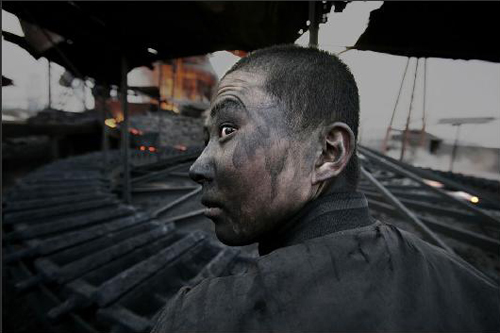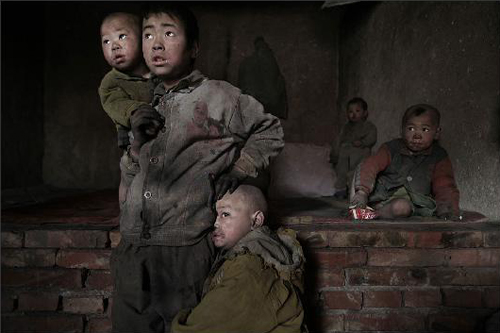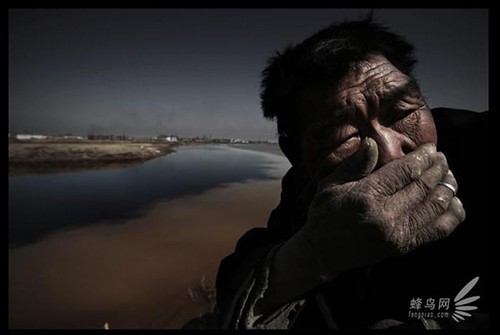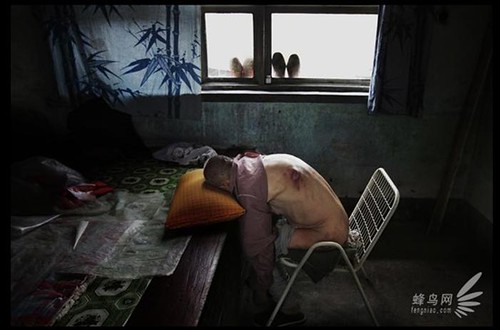Nadav Kander is the darling of photo-editors at the New York Times, which is currently devoting a whole issue front-to-back of the New York Times Magazine to “Obama’s People,” a long, long, long series of trendy snapshots by the egregious Mr. Kander, and as usual his photos impart a sense of “formalness and unease,” because “formalness and unease” is Nadav Kander’s gimmick.
For example, Kander has imbued his photo of Valerie Jarrett with the signature “formalness” of surrounding her with a big empty frame, and his signature “unease” is introduced by super-saturating her magenta suit and de-saturating her face.
And so what? “Formalness and unease” would be a more appropriate attitude around the Obama White House than Obama’s repulsive self-righteousness, but in Kander’s snapshots it’s nothing but aesthetic posturing, and most of his subjects are perfectly relaxed and informal.
And so what again? As Jay Leno once said, politics is show-business for ugly people, and although the ultra-telegenic Mr. Obama has made a career out of contravening that principle, there probably isn’t much that anybody could show in posed portraits of “Obama’s people,” and…
This diary is just a pointless rant!
But why is China in the title? Is it possible that Nadav Kander’s sofa-art for rich New Yorkers is actually somehow significant in a larger context than photo-journalism, in spite of Kander’s life-long devotion to nothing but trendy image-making?
Yes! Yes, it’s possible! Yes, the vacuity of Nadav Kander’s photo-gimmickry exactly reflects the no-soul trendiness of the New York Times, which expresses itself not only in the magazine’s tag-along puppy-subservience to every twitch and wriggle of the New York art-market, but likewise drags the editorial page and the front page and the whole soul and body of the New York Times right along with the political and media momentum of catastrophic blunders like the invasion of Iraq.
And in approximately the same way that Judith Miller prettified the idiotic “intelligence” that propelled us into Baghdad, Nadav Kander has busily aestheticized the ugly face of globalization in China with a long, long, long series of “formal and uneasy” photos of the Yangtze River, that long, long, long and godawful sewer full of carcinogens and every other species of chemical pollution.
Using the river as a metaphor for constant change, I have photographed the landscape and people along its banks from mouth to source. After several trips to different parts of the river, it became clear that what I personally was responding to and how I felt whilst being in China was permeating my pictures; a formalness and unease, a country that feels both at the beginning of a new era and at odds with itself.
And here we go again with the same little bag of tricks which formalized and queasified Valerie Jarret, the same Photoshop over-saturation of those aqua pylons, and the same faded tones for Kander’s human “subjects,” who are as always formally embedded in a very big frame.
That thing will look good behind an Upper-East-Side sofa, or in a coffe-table book on an Upper-east-Side coffee table, and that’s all that really matters about Nadav Kander.
But what about the stinking Yangtze River, and the millions of miserable people who are poisoned by it? Is the New York Times simply pretending they don’t exist?
Not exactly, and just as a few sceptical articles way back on page A-42 supposedly compensated for Judith Miller’s front-page propaganda, while the New York Times has provided a huge honking showcase for Nadav Kander, they also found a little space in their photography blog for an honest-to-God photographer, Lu Guang, and his nightmare vision of the real China which hundreds of millions of human beings actually inhabit…







1 comments
Author
“The camera is an instrument that teaches people how to see without a camera.” ~ Dorothea Lange